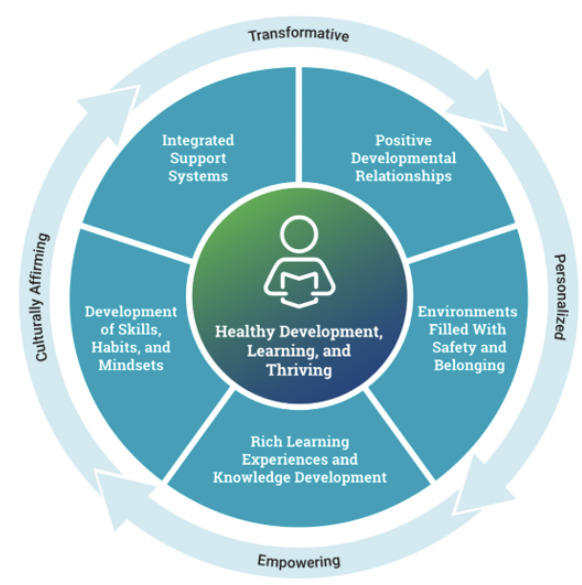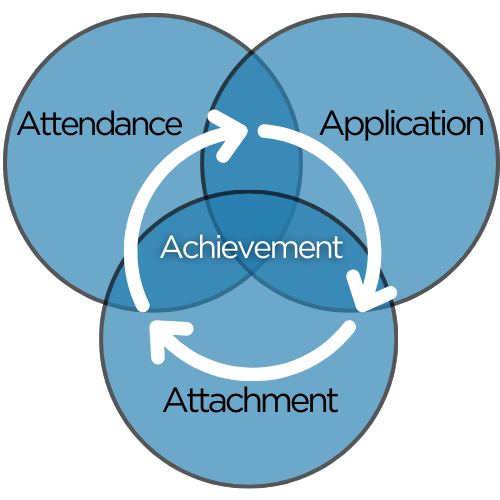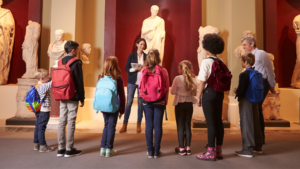
The White House’s newly announced “Improvement Student Achievement Agenda” encourages states and districts to double down on efforts to reverse academic decline by increasing student attendance, adopting intensive (“high-dosage”) tutoring and expanding summer and after-school learning programs.
U.S. Education Department officials have said they may create new grant programs in 2024 depending on the availability of federal funding. But, for now, the agenda offers a detailed roadmap to help states better use existing data and funds, including unspent money from the American Rescue Plan of 2021, enacted to offset the economic impacts of the pandemic, and Title I and Title IV Elementary and Secondary Education Act to implement programs in the three areas pinpointed by the White House. The federal government’s approach to expanding such funding in those areas involves highlighting successes in states with strong statistics about participation in their programs.
Evaluative research shows that addressing evidence-based strategies to reduce chronic absenteeism, providing intensive tutoring, and expanding afterschool and summer learning opportunities improve student achievement. The science of learning and development explains why. Done well, each of these strategies – while emphasizing different starting points, addresses the five guiding principles of Whole Child Design developed by the Science of Learning and Development (SoLD) Alliance to help translate heady research into practice.
The five principles (presented in a graphic commonly referred to as the “Blue Wheel) suggest that learning happens best in environments that 1) support positive developmental relationships, 2) are filled with safety and belonging, 3) provide rich learning experiences for knowledge development, 4) focus on the broader development of skills, habits, and mindsets, and 5) find ways to integrate in additional supports for those who need them.

Programs typically emphasize one or two of these principles in their work. But practitioners have to pay attention to all five principles to ensure that young people are not only motivated to attend school or after-school programs but also feel attached to the peers and adults in them and feel supported enough to apply themselves — to persist in their efforts to learn, even when the instructional content is challenging for them. In the end, improving student achievement requires meeting all three of these goals.
It is easy to link the three Biden Administration student achievement strategies to one or two of these principles and goals: Absenteeism reduction strategies increase attendance by providing integrated supports. High-dosage tutoring helps students apply themselves to skill and knowledge development. Afterschool programs increase attachment by focusing on relationships and developmental skill building. But learning science behooves us to set the bar higher.
Addressing chronic absenteeism requires 1) finding non-stigmatizing ways to identify and reduce such barriers to attendance, such as students’ lack of clothing or transportation, and 2) addressing penalties against students who arrive late to school; discipline and suspension policies; and high rates of teacher turnover, which reduce connections between students and teachers. Attendance could be increased by doing more to strengthen the personal attachments that chronically absent students have to adults in their school, whether or not those adults are classroom teachers.
High-dosage tutoring is most effective when students attend regularly (30-minute sessions, 3 times a week) — hence, schools tend to prefer scheduling those sessions during the school day, inside the building — and when there is good rapport between tutor and student. Consistent tutoring from an adult who takes the time to build a strong, positive relationship can reverse both the absenteeism and lack of attachment that negatively affect student performance.
Afterschool and summer programs get consistently high marks from parents and teachers because they build students’ capacity and motivation to explore interests; build new cognitive, social and emotional skills; and help students take initiative, make friends, and find their spark. But those benefits are fully conveyed to students only when they regularly attend those programs.
The Biden administration gives states the flexibility and support needed to make these connections as they develop improvement strategies. The administration continues to avoid “magic bullet” strategies like Race to the Top or No Child Left Behind. At the White House dinner for governors and state education secretaries where the Agenda was announced, Secretary Cardona said, “There must be equal parts support and accountability to get the best for our children.” He then emphasized that “These three strategies have one central goal – giving students more time and more support to succeed.”
The Biden administration positioning of afterschool and summer programs as one of three strategies for improving student achievement is consistent with earlier efforts to tap into the expertise of these programs (National Partnership for Student Success), increase program access (Every Student Succeeds Act), and encourage districts to use ARP and ESSER funds to expand the school day and/or offer afterschool programming.
2023 data from the National Center for Education Statistics shows that 87% of public schools offer after-school programming. Three-quarters of these programs have an academic focus. These statistics are both encouraging and disturbing.

Afterschool programs have always resisted being asked to “do more school”—to simply continue academic instruction into the afterschool hours. Studies show that high-quality afterschool and summer programs increase school attendance, boost academic, social, and emotional skills, and reduce disruptive behaviors. But the ingredients that contribute to these improvements are linked to these programs’ ability to apply the “Blue Wheel” principles just described, starting with relationship building and interest-driven learning.
Ensuring that young people have the time and support they need to succeed will require partnerships between school and out-of-school time leaders. Promoting all three prongs of the White House’s new strategy as part of an integrated solution to increase attendance, attachment, and applied learning in school and community settings is the most effective way to not only improve student achievement and competency, but also increase young people’s sense of self and sense of agency.
We welcome your contributions to the topic. Please reach out to talkwithus@kpcatalysts.com if you’d like to join to the discussion.




No comment yet, add your voice below!